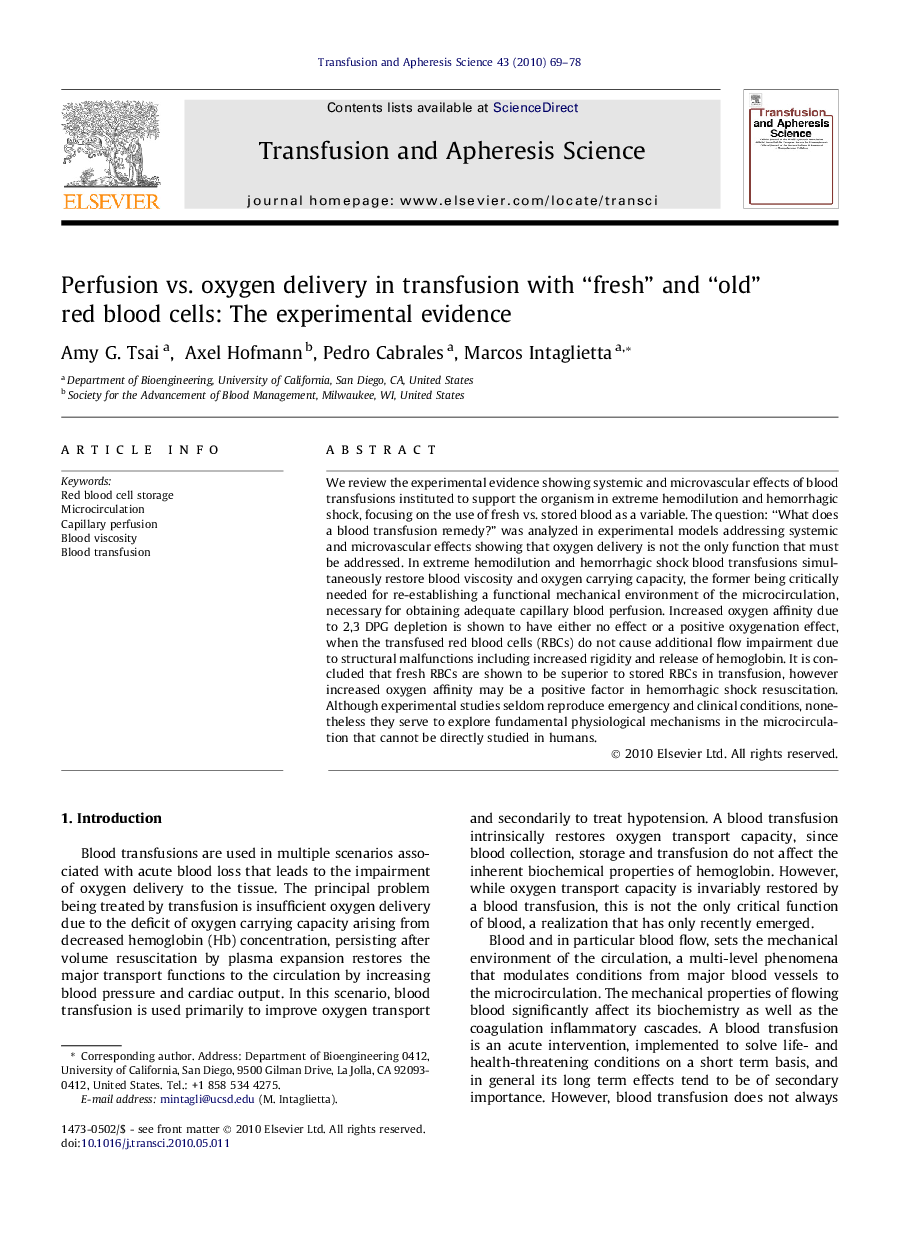| Article ID | Journal | Published Year | Pages | File Type |
|---|---|---|---|---|
| 3335853 | Transfusion and Apheresis Science | 2010 | 10 Pages |
We review the experimental evidence showing systemic and microvascular effects of blood transfusions instituted to support the organism in extreme hemodilution and hemorrhagic shock, focusing on the use of fresh vs. stored blood as a variable. The question: “What does a blood transfusion remedy?” was analyzed in experimental models addressing systemic and microvascular effects showing that oxygen delivery is not the only function that must be addressed. In extreme hemodilution and hemorrhagic shock blood transfusions simultaneously restore blood viscosity and oxygen carrying capacity, the former being critically needed for re-establishing a functional mechanical environment of the microcirculation, necessary for obtaining adequate capillary blood perfusion. Increased oxygen affinity due to 2,3 DPG depletion is shown to have either no effect or a positive oxygenation effect, when the transfused red blood cells (RBCs) do not cause additional flow impairment due to structural malfunctions including increased rigidity and release of hemoglobin. It is concluded that fresh RBCs are shown to be superior to stored RBCs in transfusion, however increased oxygen affinity may be a positive factor in hemorrhagic shock resuscitation. Although experimental studies seldom reproduce emergency and clinical conditions, nonetheless they serve to explore fundamental physiological mechanisms in the microcirculation that cannot be directly studied in humans.
